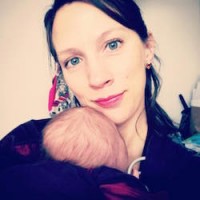“It is time for parents to teach young people early on that in diversity there is beauty and there is strength.”
~ Maya Angelou
I’m not a religious person, but religion interests me.
I was raised Lutheran and I’ve read the Bible three times (once was for a college literature class). One of my dearest soul-sister friends is Jewish and I know several Buddhist folks through my elephant journal community.
I remember poring through piles of books, sitting cross-legged in between the claustrophobic shelves of my local library’s religious section, devouring books about faiths I didn’t easily have access to understanding.
Some of my best memories of life thus far, not even of religious ceremonies, are the times I spent underneath full moons with my Pagan girlfriends in college.
And religion is something that can define, comfort and give a sense of community to people. It can also be something that inspires hatred and judgment through division rather than a shared pursuit of something greater than sheer humanity.
So, of course, I was interested in what Americans are declaring themselves proudly to be—and in what religions are populating the U.S. besides the obvious front runner, Christianity.
Well, thankfully, a religious statistics map of the USA was created by the Association of Statisticians of American Religious Bodies and then published by The Washington Post.
It’s probably not shocking to anyone that the most practiced U.S. religion is Christianity. However, this map, Second Largest Religious Tradition in Each State 2010, clearly shows that Buddhism, Judaism and Islam are the runners up.
Okay, so that might not be too surprising either, but what about Hindu being number two in Arizona and Delaware, and Baha’i being second leading in South Carolina?
Possibly more interesting, though, is that this doesn’t mean we’re actually that diverse. Hindus still only make up about 2 percent of the overall Arizona population.
Additionally, some of the runner-up religions quickly make sense when we look into why and where people are settling when they come to the States from other countries.
I actually used to live really close to Wilmington, Delaware, the location that, according to an Associated Press report, is quickly drawing Asian Indian Hindus due to computer and medical jobs, for instance.
And an NPR article makes an interesting connection between the Baha’i Faith in South Carolina and the Jim Crow laws.
NPR interviewed Louis E. Venters, an assistant professor of history at Francis Marion University and author of upcoming book Most Great Reconstruction: The Baha’i Faith and Interracial Community in Jim Crow South Carolina.
“To put the map in context,” Venters says, “let’s acknowledge at the outset that it doesn’t take very much to be the second-largest religion in South Carolina. It is a solidly Christian, and particularly Protestant, state, and all the minority religions combined comprise only a tiny fraction of the population.”
He continues that since as far back as the 1910s, “the Baha’is were virtually unique in Jim Crow South Carolina in attempting to create an interracial religious community—for which they suffered harassment and violence.”
Venters says that by the 1960s both Georgia and South Carolina were populated with Baha’i communities.
“The Baha’i community today is relatively well-known in South Carolina for its long record of interracialism, strong attention to community service and the education of children and youth of all backgrounds, and contributions to interfaith dialogue.”
He adds: “Although the map may have come as a surprise to those who aren’t familiar with this history, to me—and I think to most Baha’is in South Carolina—it makes pretty good sense. And if it brings to light one of the South’s oldest and most successful experiments in interracial community-building, so much the better.”
So, for many places across America, these runner-up religions provide interesting, key information about both past and present sociological statistics.
According to the Washington Post, more than three-quarters of Americans identify with being Christians, with a little more than half being Protestant, 23 percent Catholic and about 2 percent Mormon.
But what about the rest of us?
Apparently, the rest of us are more solidly diverse than we might initially guess.
More importantly, I think this runner-up map is a necessary reminder that the U.S. is more diverse than just one main race or religion or ethnic background, and that many of its citizens do identify with a religion—it’s not something to simply sweep under the carpet and pretend is not important.
And since the ASARB releases maps like this every 10 years, we still have a few more to consider what the implications of these maps really mean, and what they could mean.
“If we cannot now end our differences, at least we can help make the world safe for diversity.”
~ John F. Kennedy
Love elephant and want to go steady?
Sign up for our (curated) daily and weekly newsletters!
Editor: Travis May
Photo: Flickr/ Jasmine Kaloudis
 Share on bsky
Share on bsky






Read 0 comments and reply